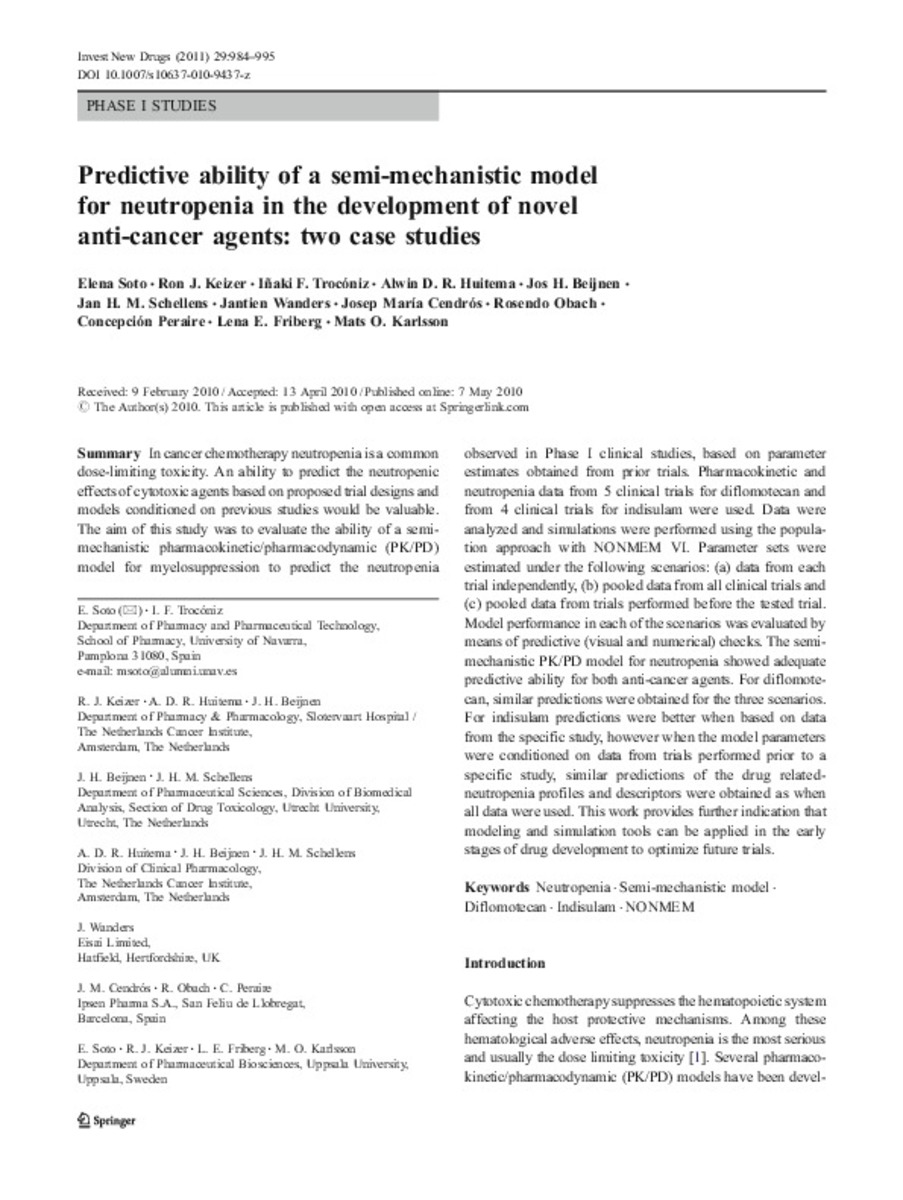Predictive ability of a semi-mechanistic model for neutropenia in the development of novel anti-cancer agents: two case studies
Palabras clave :
Cancer chemotherapy
Neutropenia effects
Pharmacokinetics
Diflomotecan
Fecha de publicación :
2011
Editorial :
Boston Springer US
Cita:
Soto E, Keizer RJ, Trocóniz IF, Huitema AD, Beijnen JH, Schellens JH, et al. Predictive ability of a semi-mechanistic model for neutropenia in the development of novel anti-cancer agents: two case studies. Invest New Drugs. 2011 Oct;29(5):984-95. Epub 2010 May 7.
Aparece en las colecciones:
Estadísticas e impacto
0 citas en

Los ítems de Dadun están protegidos por copyright, con todos los derechos reservados, a menos que se indique lo contrario.







